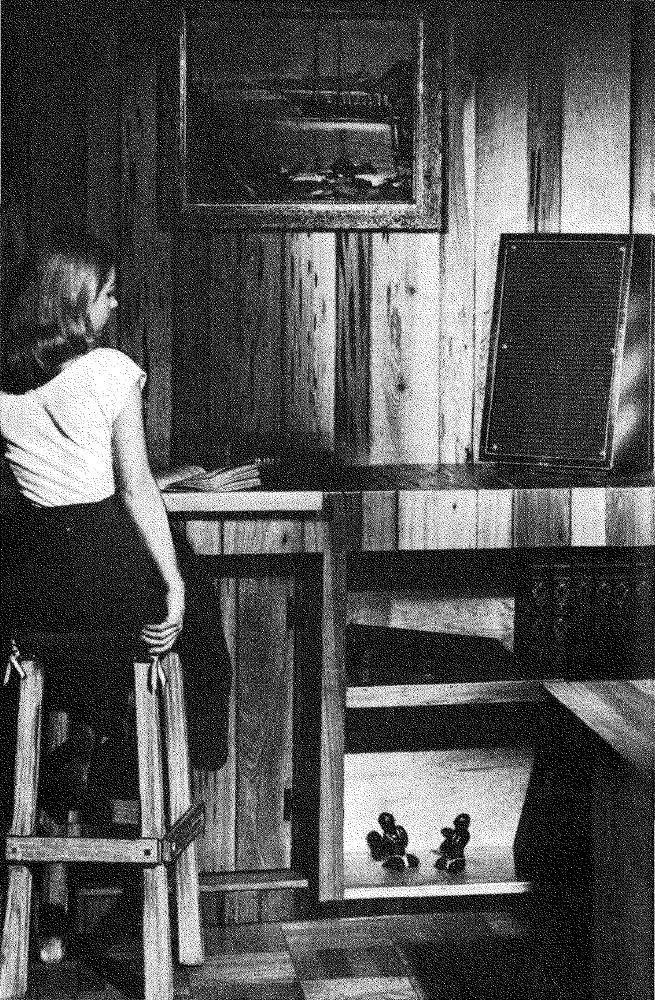
IN the preliminary planning of a hi-fi system, the need for considering the room in which it is to be placed is self-evident. The question is not whether you've thought of the room but, rather, whether you've analyzed it in such a way as to get the optimum results from both the hi-fi system and the room.
From the system you have every right to expect the best sound quality it is capable of producing, coupled with the greatest possible ease and convenience of operation. At the same time, unless you are quite affluent, you will not be in a position to set an entire room aside for listening to music. The chances are that whatever room you place your system in will be used for other purposes too, and you will want to continue these activities without interference. Thus, it's not at all surprising that from time to time conflicts of interest arise. They require a bit of careful thought to solve. Actually, you are asking quite a bit of both your hi-fi system and your room.
Even without stopping to think of the room, you can go out and get a hi-fi system, put it in a room and put the two to work together, because that is the way of it. They must work together inevitably.
By means, say, of records, you will expect this combination to sound at one moment like a half-dozen jazzmen blowing their tops in a smoke-laden cellar saloon and, at another, you may want the whole thing to sound like four dignified gentlemen in black ties and frock coats, playing string quartets in an eighteenth-century drawing room, and then you may call for the entire New York Philharmonic batting out Beethoven's Ninth in some concert hall.
In addition, you confidently expect this combination of system and room to reproduce everything from a piccolo to a contrabass double-bell euphonium with equal clarity. This is asking a good deal of a few electronic parts and an average living room, even in this age of technological miracles.
Let's see if there aren't some ways in which we can plan things so that we get out of the sound system something somewhere near what we ought to, without at the same time ruining the room for its various other uses.
Choosing the room Realizing that you can run secondary speakers to any place in the house you may choose, the first question is to decide what room you intend to use to house the main system. We can eliminate the kitchen and the bathroom without any difficulty. Since the control center should be handy to the most commonly used listening area, we can also eliminate a separate dining room, if you have one, from consideration and likewise the bedroom. This leaves us with really only three likely possibilities-the living room, or combination living-dining area, study, and game or rumpus room.
In the largest number of instances, the living room will be the natural choice as the control center for the system and listening center for the home. For listening, it is generally the best choice of any room in the house in terms of size and acoustics. At the same time, it is also the most difficult room to deal with in terms of noninterference with other activities since it is the normal center of the various goings-on that take place in the home and family.
Depending upon the inclinations and interests of those in the household, it is quite possible that the living room might be a bad place to house the system. If there are only one or two avid listeners in the house and they continually occupy the living room, this might constitute quite a nuisance to the others. In such cases, possibly the den or study might be chosen; there the listener can be reasonably undisturbed and un-disturbing to others. The problem with a den is that it is smaller in size and acoustically not as favorable to your reproducing equipment. You just have to decide what is most important to you. Perhaps the rumpus or game room will be the most logical place in your case. If so, you are back to a room size roughly comparable to that of the living room, which acoustically is a good thing. On the other hand, you probably will not have drapes or carpeting in such a room and there fore it may be a bit live acoustically and require some treatment to cut down reverberation.
Placing the speaker
Assuming that you have carefully deliberated and have chosen the most desirable room in the home for your system from the point of view of the various activities of your particular household group, it is time to consider the specific room chosen in some de tail to determine the best location in that room for your speaker and other associated equipment, and the approximate size and kind of housing you want to use.
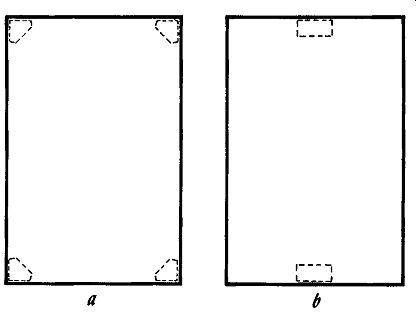
Fig. 201. There is a rule of thumb for speaker placement in rectangular
rooms: (a) corner speakers work well in any corner; (b) wall enclosures
function best when centered on either short wall.
The first and, from the point of view of sound, the most important consideration is acoustical. A system can be housed in any manner ranging from lovely to loathsome in appearance without causing one iota of change in the sound quality, provided the same acoustical considerations have been followed. The first acoustical consideration has been discussed in some detail in the previous section-getting a happy match, acoustically, between the speaker you have chosen and the type of cabinet in which you want to put it.
Room shapes
The next thing is to determine where to place it in the room to get the best results. Probably the room you have chosen will be rectangular or possibly L-shaped. I once had a client who had built a house that was S-shaped, with the result that two walls in every room were curved, but this was rather unusual. This S shaped house, by the way, raised some rather interesting technical problems. If you've an S-shaped house, call in an acoustical consultant--you'll need one; if you can afford the house, you can afford the consultant.
The rule of thumb for a rectangular room is that a corner en closure can be placed in any of the four corners and work equally well, while a wall enclosure will function best if placed in the center of one of the short walls (Fig. 201).
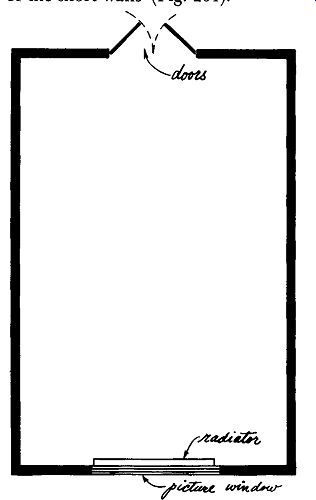
Fig. 202. Most rooms are not just four walls.
Doors and windows can be a problem.
This rule is a fine thing, except that it will leave you at a complete loss in a good many situations. It doesn't account for the fact that rooms have things like doors and windows and radiators in them. Fig. 203. When the short walls are not avail able corner enclosures can be used. If a wall enclosure is desired it may be placed off center on one short wall.
Suppose, for example, you have a perfectly good rectangular room and you intend to put in a wall speaker. The only trouble is that in your room you have a door in the middle of one of the short walls and in the middle of the other one a great big picture window with a radiator under it (Fig. 202). You obviously can't get that speaker centered against either of the short walls. If you put it in front of the window, you can't get it under the sill without taking the legs off to get it low enough and, be sides, it's right in front of the radiator, which is a bad place to put any piece of furniture because the heat will damage it. Besides, the cabinet will block the heat from the radiator and make it inefficient. At the other end of the room, you obviously don't intend to put the speaker in the middle of the doorway, so what do you do? What can you do but the next best thing? Since the speaker will operate better if it is somewhere on the short wall than if it's on a long wall, put it off center on the wall with the door as shown in Fig. 203.
Let's take another case that's even worse. Suppose you wanted to put a corner speaker in a room but you find that in one corner you have a door, in the next a radiator, in the third a curved sofa running around the corner and in the fourth a built-in china closet (Fig. 204). You haven't got a corner, so you just cannot use a corner speaker in this room. You'll have to go back and rethink your whole speaker system. In this case, you have a short wall where you could center a wall enclosure, so the best place for the speaker system will be in the center of the short wall farthest from your curved sofa (Fig. 205).
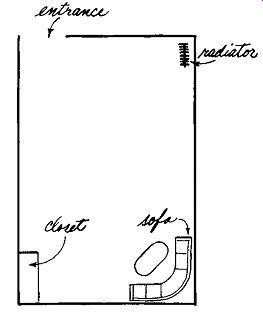
Fig. 204. Since the comers of this room are occupied a corner speaker
cannot be used.
Unfortunately, no one book can give you enough examples of different arrangements of doors, windows, radiators and so on to cover all the possibilities that might be encountered, and to give you the best solutions in each case. You must rely on your own good common sense in arriving at the best possible compromise where one is possible. And also to recognize an impossibility when you see one.
In an L-shaped room, your best location for a wall speaker will generally be in the middle of the short wall forming the end of the largest part of the L (Fig. 206). If both parts of the L are of equal size, flip a coin. In the case of a corner speaker in an L shaped room, the corner of the wall just mentioned that points diagonally toward the smaller part of the L would be the best lo cation (Fig. 207). Another good location would be the corner forming the junction of the two parts of the L.
So much for speaker placement, except for one other matter.
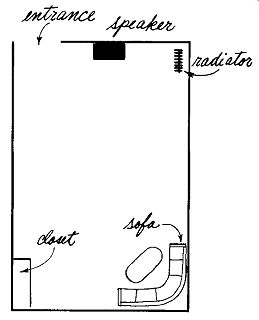
Fig. 205. Short of throwing out the sofa the only practical solution
to the problem of Fig. 204 is to use a wall enclosure.
You don't want to be too close to the speaker when you are listening. You certainly don't want to be any closer than 6 to 8 feet, preferably more. It's not invariably true that the farther you are from the speaker, the better, because there are special cases where this doesn't work, but usually you can figure that the farther away you are the better dispersion and balance will be. Also, don't sit in a location that is at a very great angle away from the direction in which the speaker itself is pointing. Try to stay within at least a 45° angle from the center line of the speaker (Fig. 208). Since high-frequency sounds are very directional, they move in straight lines, absorb easily and therefore don't diffuse well throughout the room. With most speaker systems, as you move off to the side, the highs tend to drop out.
Room acoustics
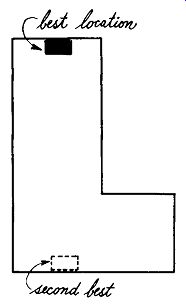
Fig. 206. The best and next-best locations for a wall enclosure in an
L-shaped room.
In addition to the position in which you locate the speaker in a room, other factors tend to affect the kind of sound that a given speaker will produce. For example, in a room that is too live, i.e., one where sounds will reverberate readily, a note that has just been played will still be reverberating in the room when the next one is played, with the result that the two mix and give a muddy effect. Often this kind of muddiness is blamed on the system, when actually the room is at fault.
There are ways of both testing and calculating the exact reverberation time in a given room and of checking this time against a graph of optimum reverberation times for rooms of various cubic
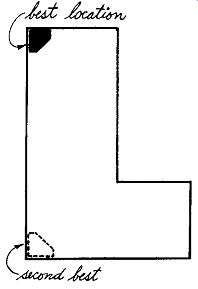
Fig. 207. Two locations for a comer speaker in an L-shaped room.
volumes to see what you've got and what you ought to have. This is a rather elaborate procedure to get mixed up in for dealing with music reproduction in the average home. If you're getting muddy sound from your system and you think it might be the room, you can usually tell by standing somewhere near the middle of the room and clapping your hands. If the sound rings in the room for several seconds after, the room is too live. If, in addition to this, you look around the room and find that there is very little upholstery and a lot of reflective surfaces like uncarpeted hard floors and smooth plaster walls, you have another clue that indicates an excessively live room.
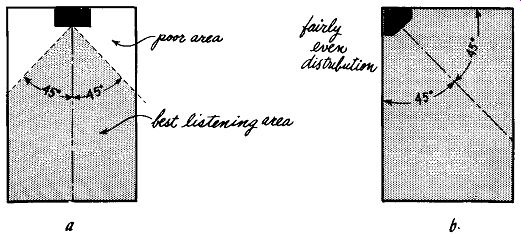
Fig. 208. Approximate sound distribution from a speaker: (a) wall enclosure;
(b) comer placement.
If this looks like your problem, make one more test, just to be sure. Get a lot of heavy blankets, strew them all over the floor and hang them up on the walls. Now try your system and see if the muddiness is reduced. If it is, you've proved excessive reverberation.
If you do have this trouble, it can be solved by introducing enough sound-absorbing material to damp the reverberation to an acceptable point. These absorptive materials could be carpeting, drapes, acoustical tile or acoustical plaster. You'll be amazed at how much reverberation will be sopped up merely putting a car pet on the floor.
The average living room, is more likely to be too dead rather than too live. Nowadays, many people are using wall-to-wall drapes and wall-to-wall carpets. If your room should be a bit dead and you can easily get rid of some of the absorptive material, per haps by taking out a drape or an overstuffed chair, fine. If not, then all you have to do is to crank up the treble tone control on the amplifier a bit to compensate for the highs that are being absorbed and forget about the whole thing.
Traffic patterns
The next factor to be considered, particularly in relation to equipment enclosures, is the traffic pattern in the room. Where do people most often enter or leave the room, and where do they move within the room in the performance of their normal activities while there? At first this may sound like a silly thing to consider in connection with a hi-fi set, but an amazing number of people have knocked their shins against an open cabinet door or tripped over a changer drawer while it was open (incidentally, often ruining the changer or the drawer) merely because no one stopped to notice where people walked most frequently. Any equipment cabinet that is to have swinging doors, drop fronts or drawers must be located where room traffic is light. Particularly if children are rushing in and out, a little thought to the traffic pattern can save a lot of cabinet doors from being knocked off their hinges.
How do you determine the major traffic pattern in a room? There are a couple of ways, and one of the simplest is merely to look at the floor. Do you see more signs of wear in some parts of the floor or carpet than others? Do you find that some parts of the floor get dirty faster than others? The parts that get the dirtiest are the parts that get the most traffic.
Another trick is to look at the doors in the room. How many ways are there to get from one to another, and which are the routes most often used? If you really want to be a stickler about it and find out in real detail what the traffic pattern of the room is, make a scaled floor plan. Then for a couple of weeks keep track of who goes where in and through the room, and mark the routes and frequency of use on the plan (Fig. 209). However, to get enough of an idea to serve your purposes, you probably will not have to go into this much detail.
A little later on when we discuss possible shifts in the location of your furniture, remember that there are two aspects of the room traffic pattern. One is primarily influenced by the location of fixed structural features such as doors, windows, fireplaces, stairways or what have you. These cannot be moved and should not be obstructed.
Other parts of the traffic pattern are as they are because of the location of movable objects-chairs, tables, lamps, cabinets, etc. and these patterns not only can but will be changed by moving these objects.
Next, the types of activities for which the room is used and, at the same time, where in the room these most commonly occur.
For example, do you have a favorite chair to which you retire to read the paper after dinner and do you prefer to keep the chair exactly where it is? Does the lady of the house have a favorite spot where she likes to read or sew or relax? Do the children have favorite areas in the room for their activities? Is the room used as a gathering place for the entire family?
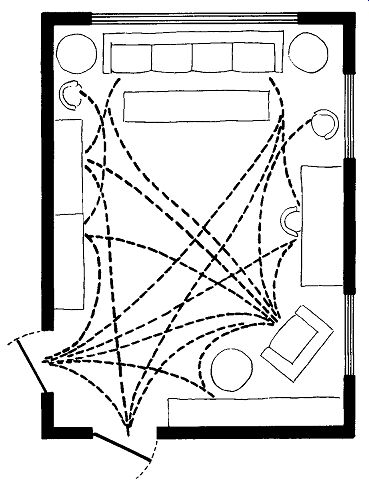
Fig. 209. The chicken scratches indicate the traffic pattern in a living
room. This pattern is a variable one and must be plotted for individual
rooms.
What kind, frequency and size of entertaining is done? Do you occasionally have a few friends in for an evening of cards or conversation, or is this a frequent occurrence? Do you have large parties often, or does this happen very seldom? Does the man of the house have any occasion to do a little, a lot or no business entertaining? These questions and any others that apply specifically to your particular circumstances must be answered to determine where the speaker (or speakers) and equipment housings can be located.
For example, if the lady of the house wants to listen to music while her husband reads the evening paper, it would seem only logical to locate the speaker so that it will not blast right in his ear while he sits in his favorite chair. On the other hand, if he is the avid listener, the same consideration applies to the wife. It might also be desirable to locate the equipment so that the controls are convenient to the favorite seat of whoever uses the system most.
If you do mainly small group entertaining, you are likely to want your equipment controls conveniently located to your main seating area so that you can change records or radio stations with a minimum of disturbance to the conversation. The equipment could be put in a cocktail or end table. If, on the other hand, you do large group entertaining, the controls for your system probably ought to be in a relatively inaccessible place where your guests will not be tempted to fiddle with them.
Service outlets Another group of factors that should come in for consideration is the location of various types of service outlets around the room.
For example, how many, what kind and where are they in relation to radiators or other heating elements? A cabinet should not be set in front of a major source of heat. Putting it there will materially reduce the efficiency of the heating element and, at the same time, do no good to either the cabinet or the equipment in it. Equipment generates a fair amount of heat itself and should have an opportunity to ventilate with some reasonably cool air.
Placing any cabinet, hi-fi or not, too close to a heating element is a bad idea. The combination of heat and dryness can cause all sorts of grief. It can dry the glue, split joints, warp panels, check the veneer, split solid wood parts and damage the finish. However, the location of electrical outlets isn't too critical since, if the equipment is too far from the nearest outlet you can always use an extension cord. But these cords should he run carefully, to avoid the possibility of tripping.
Ventilation
Ventilation of the room is another factor. Possibly no one has ever succeeded in blocking a window with a system, but I do know of a number of cases of interferences with access to the window.
Having to reach over a large cabinet to get to a window can make opening and closing it quite difficult.
Do not block the opening of an air-conditioning unit. A blocked air-conditioner, like a blocked heater, will be far less efficient than it should be.
The scaled floor plan
If you really want to plan a room properly, do what professional interior decorators and designers do-make a scaled floor plan first. This way you can get a sort of bird's-eye view of how things are going to shape. Granted there is a bit of work involved, but a floor plan is not difficult and can save you a good deal more trouble than it can cause. Professionals have found that this device greatly helps them to visualize and plan the relationships of the different things in a room. You will too!
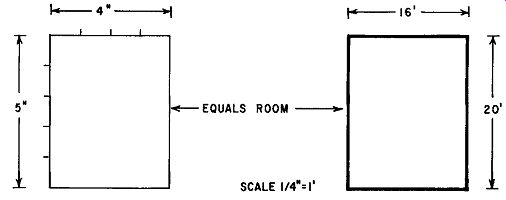
Fig. 210. One of the most important tools is a scale plan of the room.
Here's how you go about making a simple scaled floor plan. The first things needed are the basic measurements of the room, the length and the width. Also measure any L or alcove jutting out from the main area or any closet, stairway or other construction projecting into the main area.
Next, start the scaling. All this means is that you will proportionally reduce all the measurements you have taken by the same factor and then draw them on paper. The result will be a miniature version of the room, in which all lengths and distances will have exactly the same relationship to each other that they have in actuality.
How to scale
Let's take a very simple example and see how it works. Suppose you have an absolutely plain rectangular room 16 by 20 feet with no constructions projecting either in or out of it. There are windows and doors, of course, but no alcoves or L's. The floor is a simple rectangle. How would you show this in scale? First, you decide what scale you want to use (theoretically, the number of possibilities is infinite). In practice, very few are convenient. For example, 1 foot could equal 1 inch in your scaled drawing, or you could use a scale of 1 foot equals 1 ½ inches or 1 foot equals 3 inches. Actually, you can use a scale of 1 foot equals 1 ¼ or 7/16 inches, if you choose, but odd fractions such as these are very clumsy to work with. Use the ones that lend themselves to simple arithmetic and which will supply you with convenient sized drawings.
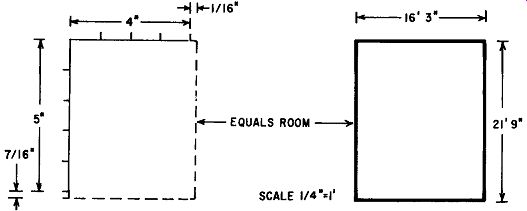
Fig. 211. When the room measurements are in fractions the job of scaling
becomes a little tougher.
Architectural drawing is often done to a scale of 1 foot equals ¼ inch so, for the moment, let's use that. To get back to our ex ample, we want to show a simple rectangular room 16 by 20 feet in a scale of 1 foot equals¼ inch. We draw a rectangle 16 quarter inches wide by 20 quarter inches long. Since 16 quarters equal 4 inches and 20 equal 5 inches, a 4 by 5-inch rectangle represents our 16 by 20-foot room (Fig. 210). Fractional dimensions That was an easy one because it came out even. But suppose the room measured 16 feet 3 inches by 21 feet 9 inches. We know from the last example what to do with the 16 feet and the 21 feet.
Since ¼ inch equals 1 foot we have 16 quarters or 4 inches by 21 quarters or 5¼ inches. But what do we do about the 3 inches over on the width and the 9 inches over on the length? Because 3 inches is ¼ foot, to represent it we need a quarter of ¼ inch or 1/16 inch. Our scaled width is then 4-1/16 inches. On the length, 9 inches is ¾ foot or, in scale, ¾ of ¼ inch or 3/16 inch, so our scaled length becomes 5-7 /16 inches (Fig. 211). If you come up with measurements still more fractional than those given in these examples, let's say, a room with a wall 16 feet 1 ½ inches, round the fraction to the nearest ¼ foot. In this case you would round off at 16 feet 3 inches, which would give you a line length in scale of 4-1/16 inches.
If this is still a little hazy to you, here is a practice column of measurements in feet and inches (room dimensions) and a column of line lengths in inches and fractions that represent these measurements in a scale of ¼ inch to the foot (scale dimensions). Cover the second column and calculate from the first what you think the line lengths should be.
Room dimensions Scale dimensions
18' 10¼" 4 11/16"
6' 4¼" 1 9/16"
19' 2½" 4 13/16"
37' 6¼" 9 3/8"
2' 5½" 5/8"
12' 9½" 3 3/16"
All you need is a little practice to get used to the method and you'll have no trouble scaling anything you want.

Fig. 212. A triangular scale ruler such as used by architects helps
make the toughest scaling job easy.
If a scale of ¼ inch to the foot seems too small for what you want, use a larger scale (½ or 1 inch to the foot). The method is exactly the same.
If you have a large room and go up to a scale of 1 inch to the foot, you will end up with a rather large drawing. But it is easier to visualize things from a large drawing than a small one. Just don't make the drawing so large that it is too cumbersome to handle.
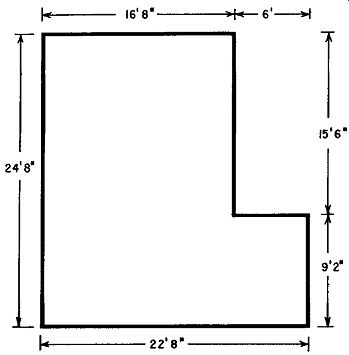
Fig. 213. The share of the room really doesn't make scaling any more
difficult.
A regular architect's scale ruler will cost about $3 or $4, at a local art supply store, but it will save you the operation of transposing feet and fractions into inches and fractions. Get the tri angular type. It has six scales on it and between them they'll cover everything you are likely to need (Fig. 212). In any event, we'll assume now that by one method or another the basic shape of your room has been laid out in scale, showing any important projections into or out of the main area. These projections naturally are scaled in the same manner as the main part of the room (Fig. 213). Now measure and locate on the drawing such fixed features as windows, doors, fireplace, electrical outlets, columns, etc. Keep to scale when marking in these elements on the drawing. A window 3 feet wide and 8 feet out from a corner in a scale of ¼ inch to the foot will be 2 inches from the corner and ¾ inches wide on the drawing (Fig. 214). Take the length and width measurements of all of the furniture already in the room. Using these measurements, lay out each piece of furniture to scale on a separate piece of paper and cut each one out so that they can be laid on top of your main drawing and moved about at will (Fig. 215). If the paper cutouts have a tendency to curl, make them of light cardboard.
By placing these cutouts in their appropriate positions on your drawing, you will be able to represent your room as it is at present, and also try various alternate arrangements. By using water colors, crayons or colored pencils, you can play around with color schemes too, if you like.
On the basis of your equipment and what we've discussed in Section 1 regarding the amount of space required by it, you should be able to approximate the amount of space your hi-fi cabinets will require. Scale them and make cutouts for them in the same manner as for your other furniture. You may, by now, have two or more alternate arrangements in mind, in which case scale them all so that you can try them on the floor plan to see which fits best (Fig. 216). You can now juggle things around to see how you can best arrange them.
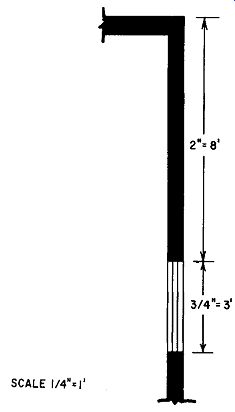
Fig. 214. Because of their small size scaling details can seem like
a problem.
As you experiment with various arrangements of the room and furnishings, remember to keep in mind everything we've been discussing. Your speaker cabinet should be in an acoustically favor able place, but not interfering with the traffic pattern. And recall that, as you move things from present locations to new positions, you will inevitably alter that pattern.
If everything looks OK, you are ready for the acid test, which is to try out the setup that you now have on the drawing. We'll assume you haven't got the hi-fi cabinets yet so you cannot try them in place. But you can try what you have got.
It may be that in laying things out you discovered that it was impossible to keep everything and still add a hi-fi rig. You have had to eliminate something to clear the necessary space. Before you get in too deep take out of the room whatever has to go and see if you are going to be comfortable without it. On paper you may have eliminated the wrong things. Perhaps you really need what you had planned to take out. It is also possible that you can perfectly well dispense with something else you hadn't thought of in order to make things as comfortable as they ought to be. Now that you are looking at things more critically, you may see that a lamp here or perhaps a little table over there would certainly be very helpful.
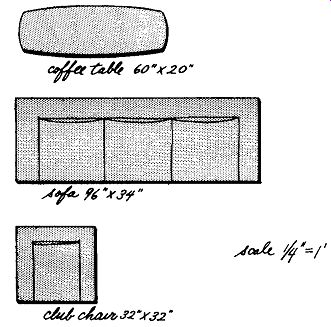
Fig. 215. To make the scaled drawing of the room complete small scale
cut outs of the furniture are needed. It is easier to shove pieces of
cardboard: around than it is to shuffle the furniture.
It would be surprising if you do not find that you have done yourself a big favor by critically examining your room and your use of the space in it. Whether you own or rent, a good deal of money is involved in that space. If you are not using it to the best advantage, if you are not able to do the things you want to do in it comfortably and easily, you are a long way from getting your money's worth out of it. And in many cases, the fault lies with you, not with the way in which the architect designed the space.
Granted there are both houses and apartments that make one won der how anybody with all of his senses intact could have seriously intended them to be used as human habitations, but you'll be pleasantly surprised at what can be done in the way of gaining good space utilization if you are willing to use a little ingenuity and make a moderately educated effort.
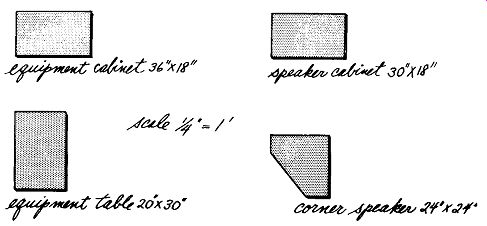
Fig. 216. Tentative cutouts of the hi-fi cabinet possibilities make
the job of scaling complete. Now you can see what you have and what you
want at a glance. If it isn't right, tear up the cutouts. This is easier
than making a mistake and being caught with cabinets that are good only
for firewood.
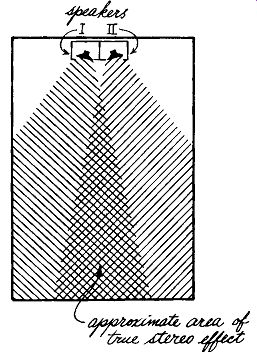
Fig. 217. Sound distribution pattern in a rectangular room.
Stereo and the room
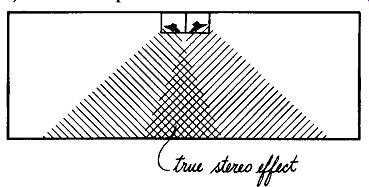
Fig. 218. The center of a long wall is not a good position for the enclosure.
If you are considering stereo at all, and these days who isn't, start thinking now about how stereo will affect your room planning, and also how certain unalterable features of the room may affect your plans to set up a stereo system. This is equally true whether you intend to start now from scratch with a completely new stereo system, to modify an existing system to handle stereo or to install monophonic equipment for the present with intent to alter to stereo in future.
Neither stereo signal sources (tuner, record player, etc.) nor amplifiers and preamps are likely pose problems of finding housing space. Stereo components in these categories do not differ significantly from monophonic ones in size or mounting requirements, with the exception of high-powered amplifiers and the larger tape machines. If you have been able to allocate space in the room to their monophonic counterparts, you may not have to alter your present allowances by more than a few inches here and there to accommodate the stereo units. "While it is entirely possible that in some cases no increase at all will be necessary, you will probably find that you will require additional space for the speakers.
Stereo speaker placement
As far as room space and placement are concerned, there is a big difference between monophonic and stereo. So let's take a second look at the four basic types of stereo speaker arrangements, this time with an eye to seeing under what room conditions each can be expected to operate successfully, and at the same time note what conditions might impair proper operation.
The first arrangement, discussed in Section l, is to enclose two matched speaker systems in opposite ends of a single cabinet that has been divided internally into two separate compartments.
This method works best when the enclosure is placed in the center of a short wall in a rectangular room. The approximate sound distribution pattern (Fig. 217) shows why. The true stereo effect occurs only in the area where the individual distribution pat terns of the two speakers overlap.
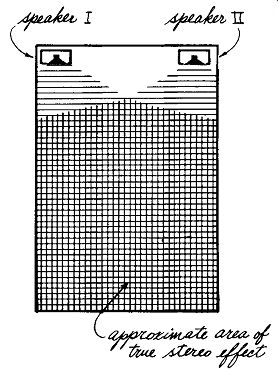
Fig. 219. Enclosure positioning to get a large stereo area.
This center-of-the-short-wall location, incidentally, is also the location of choice for a monophonic wall speaker. If you had already planned to place your mono speakers there, it will be no hardship at all to switch to stereo.
You may remember that the middle of the long wall was considered no good for your mono speaker, and it is no good for stereo either. Fig. 218 shows why-and it is the same basic reason.
The area of balanced sound is small relative to the entire room.
Moving the speaker back and forth along this wall will do no good either, unless you want to tolerate a relatively small listening area.
Looking at Fig. 217 again, you can see that, if the enclosure is moved very far off center on a short wall, you'll soon start reducing the area of true stereo-which is no good either. There fore, if the enclosure cannot be kept fairly near the center of a short wall, do not use this single-cabinet method of housing stereo speakers.
The single-cabinet system is not much good in L-shaped rooms.
Add an L anywhere you like in Fig. 217 and you still won't get any appreciable stereo effect in the short arm of the L. Of course, L's are rather difficult to drive anyway, and stereo only compounds the problem.
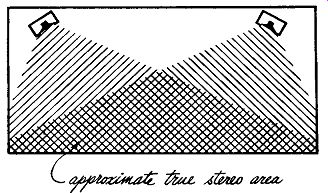
Fig. 220. Enclosures can be used against a long wall to supply a moderately-sized
stereo area.
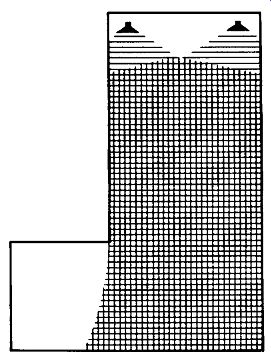
Fig. 221. Stereo effect in a room having an alcove.
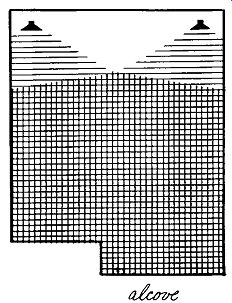
Fig. 222. In this arrangement the alcove forms part of the listening
area.
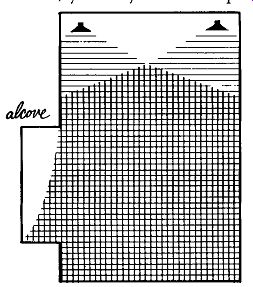
Fig. 223. In this room only a part of the alcove is in the stereo-effect
area. Let's look at the second alternative, twin speaker systems in twin
cabinets. Acoustically, this is a good solution. It generally works best
if the two systems are placed in the corners of a short wall in a rectangular
room (Fig. 219). In this way an extremely
large area of the room gets a true stereo effect. Obviously, the area receiving this effect is vastly larger than when the preceding positioning is used. If for one reason or another the speakers are not right in the corners, you can still get true stereo through out a substantial part of the room as long as they are well separated. In any particular room, once the spacing between the speakers has been fixed, you may have to experiment to arrive at their optimum angle from the wall to get the best sound over the largest possible area.
The glaring disadvantage of this approach is the need to find space for two speaker boxes instead of only one, but on the plus side you do have a reasonable amount of flexibility as to placement. For example, if you have no choice but to place the speakers on a long wall, you'll still get decent stereo over a fair area (Fig. 220). The L-shaped room still presents a nasty problem, and the best solution is often to treat it as though the larger arm were a plain rectangular room (Fig. 221 ). The "true-stereo" area will overlap a bit into the short arm, but generally not very much.
So you'll do your stereo listening in the large arm.
In a room with an alcove at the far end of what will be the true stereo area, the alcove will form an extension of that area (Fig. 222). But alcoves off to the sides are likely to act like L's acoustically, particularly if they get very deep. The stereo effect is likely to be lost in a good part of the alcove (Fig 223). Very little can be done about this, except to deplore it and stay out of the alcove.
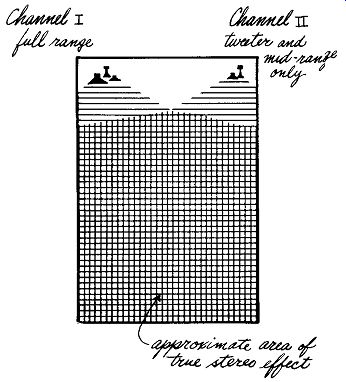
Fig. 224. The best position for the tweeter and mid range speakers is
in one corner of the short wall.
A number of extremely compact full-range speaker systems suitable for stereo use are presently available, but you may not have the space for them. Or perhaps, with a sizable investment in one big-full range system, you are reluctant to cut it back so that you can match it with a second one or cannot afford to match it as it is.
Then, the third alternative may be for you. Keep the big system as it is, but for your second channel, get a small system for just mid-range and highs. That is the range in which the stereo effect lies anyway, so very little will be lost by omitting the bass end of the second channel.
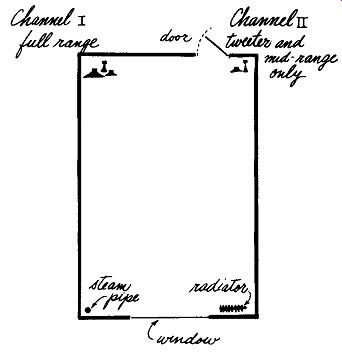
Fig. 225. In this room arrangement only one short wall is available
for a two channel system.
In a rectangular room, treat this setup much as if it were composed of two matched speaker systems. The best position will again be the corners of a short wall (Fig. 224). There is another instance when this arrangement might be particularly desirable. Suppose you have a rectangular room such that one of the short walls is completely out of the question as a speaker location because of other furniture, traffic, radiators, wife's flat refusal or other reasons, and the other short wall has a door close to one corner (Fig. 225). Perhaps you couldn't get the full-range system you'd prefer into the space available, but a mid-range and tweeter setup will fit next to the door with the full range system in the other corner.
Try not to use this unbalanced arrangement on the long walls of rectangular rooms. If the full-range system gets too far away from the tweeter-mid-range system, you are likely to start missing the bass that's out of the second channel.
In an L-shaped room, the same old problem that stereo won't bend around corners very well is still there.
Alcoves, too, will behave about the same now as they did when both speaker systems were matched, and for the same reason.
The final alternative in speaker arrangements consisting of a woofer in the center flanked by two independent tweeter-mid range systems is primarily for use in quite large rooms. If the shortest wall of a room is 20 or 30 feet, twin matched-speaker systems-even quite large ones-can be troublesome. If twin speakers are too far apart, you are likely to get the effect of a dead spot or "hole" in the middle. In such cases, putting the woofer in the center fills the hole quite successfully and evens the sound distribution quite considerably. But the woofer, must be fairly well centered to get proper results. You can take a little leeway either side of dead center in placing the woofer, but don't take very much or you won't get the effect you are after.
In fact, this kind of stereo setup is considered by some to be one of the more economic ways of coming close to the ideal stereo speaker arrangement. Some speaker manufacturers are marketing special units for this purpose. A centrally located woofer which cuts off above 300 cycles is used in conjunction with tweeter-mid range units which are precisely matched. At least one manufacturer uses horns for the balanced upper ranges. The result is that the two side units are in narrow, easily placed enclosures.
Illusory effects
It has been suggested that the so-called hole-in-the-middle effect is simply a visual-aural illusion. Several experimenters feel that they have proved this point. A properly positioned two-channel speaker system was set up behind an acoustically transparent but visually opaque curtain. Almost all of the listeners reported that what they heard was a remarkably full performance without the ping-pong effect that was one of the bugs in a two-channel system.
When the curtain was removed, however, the hole-in-the-middle made a remarkable reappearance.
This doesn't mean that you should howl "eureka!" and run out to buy yards of drapery material. You'll need special cloth, and the visual effect on the room may not be what you want anyway.
Enclosure shapes
Aside from the necessary differences between the shapes of a wall and corner enclosure, the boxes which hold your stereo speakers can be long or short, lean or squat, or any other combination you desire.
Having the proper balance between speakers is one thing and having identical enclosures is another. If you already have a speaker system housed in one of the larger enclosures, it does not mean that your stereo addition must be its twin.
Provided you have amplifiers capable of driving one of the low efficiency bookshelf units, there is no reason why you cannot use it to provide the second channel for a stereo system.
Don't get me wrong! From an esthetic point of view it's often a good thing to have similar enclosures as far as size and shape go.
But if your tastes run to asymmetrical arrangements you can use a tall narrow unit near a wide squat one and still get acceptable stereo.
Sometimes the very nature of the room will exclude all possibility of using matched enclosures, particularly if the furniture used for an original system is large. Again, the problem must be approached intelligently--if you have to sacrifice a comfortable chair in order to squeeze another large enclosure into the room, when you have space for one of the compact ones, then it would seem only sensible to keep the chair and not worry about the David and Goliath atmosphere of the cabinetry.